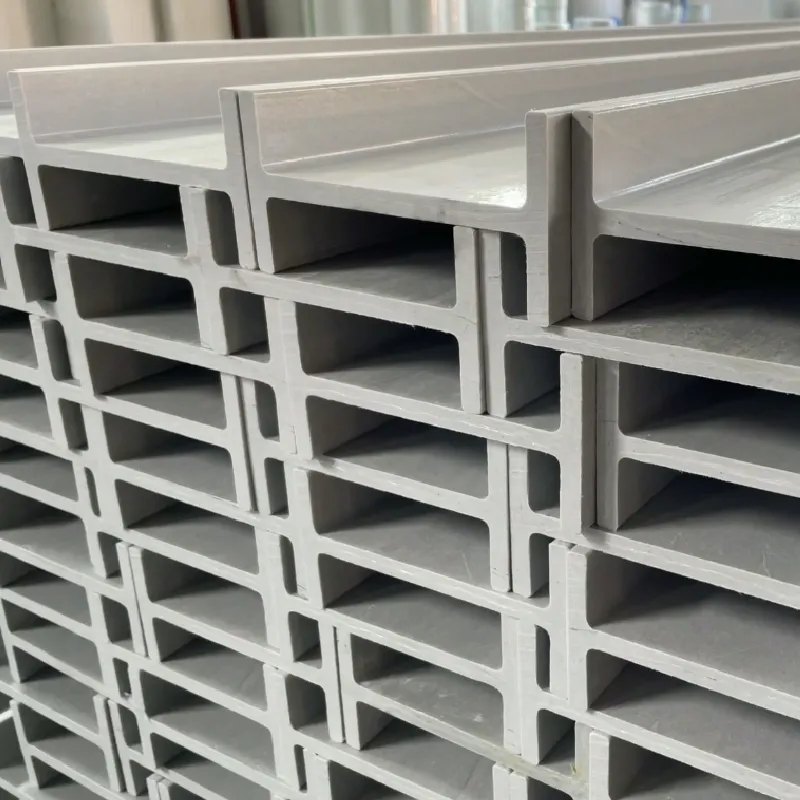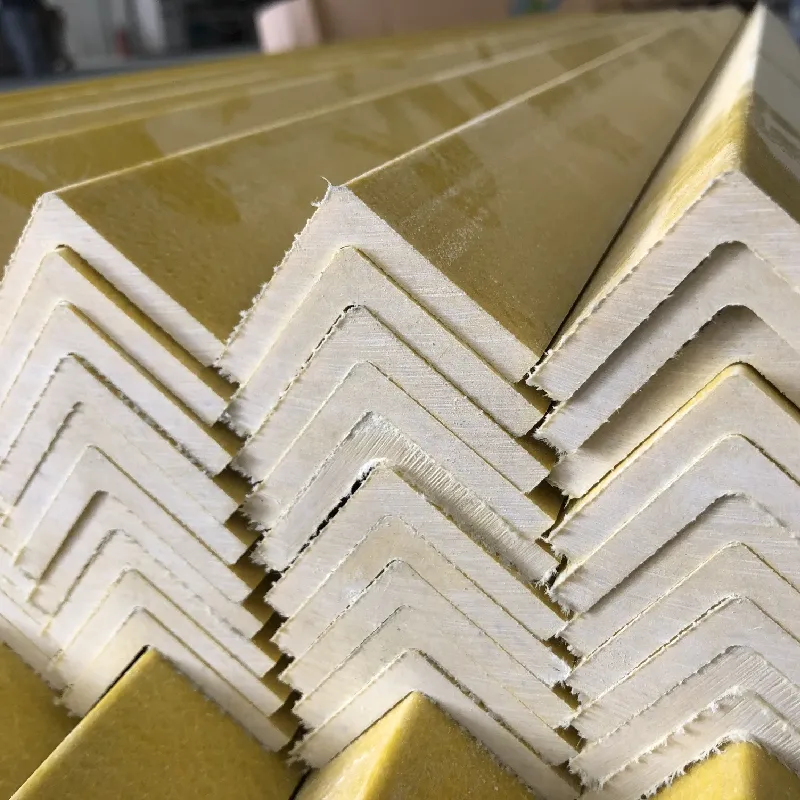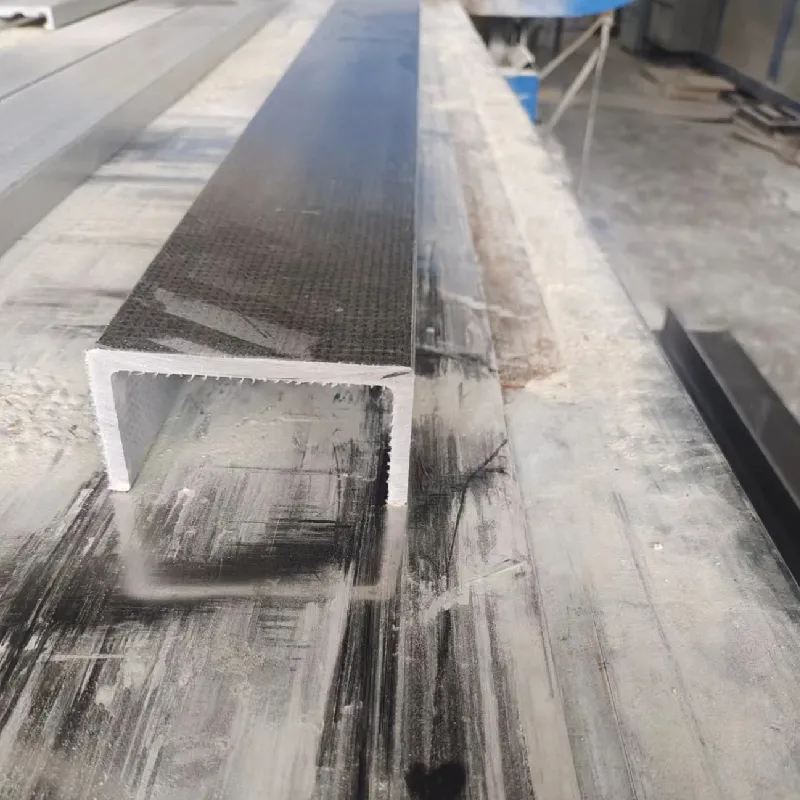loading...
- No. 9, Xingyuan South Street, Dongwaihuan Road, Zaoqiang County, Hengshui, Hebei, China
- admin@zjcomposites.com
- +86 15097380338
- Welcome to visit our website!
FRP Profiles | Lightweight & Durable Solutions
About Zhaojia Composites Co., Ltd
Industry Trends and Market Growth
The global market for FRP profiles has shown remarkable growth over the past decade. According to the American Composites Manufacturers Association, annual demand for structural FRP profiles increased by 8.7% from 2020 to 2023, significantly outperforming traditional construction materials. This growth is primarily driven by three factors:
First, infrastructure renewal programs across North America, Europe, and Asia increasingly specify FRP profiles for bridge decks, rail platforms, and waterfront structures where corrosion resistance extends service life by 300-500% compared to steel. Second, sustainability initiatives favor composites due to their lower embedded energy and carbon footprint. Finally, advanced manufacturing techniques like pultrusion have dramatically reduced production costs, making FRP profiles cost-competitive over lifecycle analyses.
The construction sector accounts for 68% of FRP profiles consumption, followed by industrial applications (17%) and transportation (15%). Industry analysts at Composites World predict this distribution will shift as electric vehicle infrastructure and renewable energy installations create new demand vectors for high-performance profiles.



Product Spotlight: High Strength FRP Pultruded Profile Fiberglass I Beam
ZJ Composites' flagship product represents the pinnacle of FRP profiles engineering. Our High Strength FRP Pultruded Profile Fiberglass I Beam for Construction delivers exceptional mechanical properties with a density just 25% of steel, reducing foundation requirements and installation costs. The innovative design provides:
- Tensile strength of 1,000 MPa - equivalent to structural steel
- 1/4 the weight of equivalent steel beams
- Dielectric properties eliminating electrical hazards
- Corrosion resistance in chloride environments exceeding 50 years
- Customizable cross-sections up to 24" depth
- Low thermal conductivity (0.04 W/mK)
These FRP profiles are manufactured using proprietary pultrusion techniques that optimize fiber alignment and resin impregnation, achieving void content below 0.5% for maximum structural integrity. The formulation combines isophthalic polyester resin with E-CR glass fibers, creating profiles that retain 95% of their mechanical properties in temperatures ranging from -60°C to 120°C.
Technical Specifications and Performance Metrics
The engineering properties of FRP profiles vary based on fiber orientation, resin chemistry, and manufacturing methods. Pultruded profiles offer the most consistent mechanical properties due to the controlled production environment. The following table compares key performance indicators across material types:
| Property | Standard Steel | Aluminum 6061 | Standard FRP Profile | ZJ High-Strength I-Beam |
|---|---|---|---|---|
| Tensile Strength (MPa) | 400-550 | 290 | 480-620 | 900-1,000 |
| Density (g/cm³) | 7.85 | 2.70 | 1.80-2.00 | 1.92 |
| Modulus of Elasticity (GPa) | 200 | 69 | 25-35 | 42 |
| Thermal Expansion (10-6/°C) | 12 | 23.6 | 9-12 | 8.6 |
| Corrosion Resistance | Low | Medium | Excellent | Superior |
| Service Life (years) | 15-25 | 20-30 | 50+ | 75+ |
While traditional materials exhibit isotropic properties, FRP profiles offer orthotropic characteristics that can be engineered to match loading requirements. This allows for significant material optimization, reducing weight while maintaining structural performance. The tailored nature of composites makes them particularly suitable for applications where directional strength requirements vary significantly.
Material Cost Comparison (20-year lifecycle)
Strength-to-Weight Ratio Comparison
—Journal of Composites for Construction (ASCE), Volume 26, Issue 2
Application Scenarios Across Industries
Infrastructure Development
FRP profiles are increasingly specified for bridge decks, rail platform edging, and pier structures where corrosion resistance significantly reduces lifecycle costs. The Seacliff Pier reconstruction in California utilized FRP profiles exclusively, achieving a projected 70-year service life despite constant saltwater exposure.
Industrial Platforms and Walkways
Chemical processing plants benefit from the dielectric properties and chemical resistance of FRP profiles. Standard I-beam configurations serve as structural members for grating systems that resist acids, solvents, and alkaline solutions that rapidly degrade steel alternatives.
Renewable Energy Infrastructure
Solar farm mounting systems and wind turbine access structures increasingly utilize FRP profiles due to their non-conductive properties and resistance to weathering. The low thermal conductivity prevents heat transfer to mounting surfaces, improving photovoltaic efficiency.
Water Treatment Facilities
From chlorine contact tanks to weir gates, FRP profiles demonstrate exceptional performance in high-moisture environments. Their microbial resistance inhibits biofilm formation critical in potable water applications.
FRP Applications by Industry Sector
Market Growth Forecast (2024-2030)
Technical Expertise: Professional FAQ
Structural FRP profiles primarily utilize three resin systems: isophthalic polyester for general applications, vinyl ester for enhanced chemical resistance, and epoxy systems for premium mechanical properties. Selection depends on environmental exposure and performance requirements. The resin content typically ranges from 25-35% by weight in pultruded profiles.
The pultrusion process achieves exceptionally tight tolerances of ±0.005 inches/inch for commercial products. Critical structural sections can maintain wall thickness tolerances within ±5% and profile straightness within 1/8" per 10 feet. This precision exceeds most extruded metals and enables bolted connections without special fabrication.
Key certification standards include ASTM D3916 for pultruded profiles, ASTM D790 for flexural properties, and ASTM D3039 for tensile characteristics. For construction applications, profiles should comply with ICC AC174 (US) and EN 13706 (EU) standards. Fire performance testing follows ASTM E84 for surface burning characteristics.
The coefficient of thermal expansion (CTE) for FRP profiles along the fiber direction is typically 6-10 × 10-6/°F, comparable to steel. Transverse CTE ranges from 12-20 × 10-6/°F. Designers must account for directional movement at connection points using oversized holes or slip connections in high-temperature fluctuation environments.
Three connection approaches are preferred: mechanical fastening with stainless steel hardware, adhesive bonding using methacrylate or epoxy systems, and hybrid connections combining both methods. Adhesive joints distribute loads effectively while mechanical connections provide inspectability. Proper surface preparation is critical regardless of method.
Ultrasonic testing effectively identifies delamination and void content. Visual inspection under ASTM D2562 standards checks for surface imperfections. For critical applications, micrographic analysis validates fiber alignment and resin distribution. Quality manufacturers provide mill certification reports for each production run.
Unlike structural steel, FRP profiles do not lose strength at elevated temperatures but begin decomposing at 300-350°C depending on resin systems. Flame-spread ratings of 25-50 are typical, comparable to timber. For fire-rated applications, specialized resin formulations achieve 1-2 hour fire resistance ratings.
—International Journal of Fatigue, Volume 176
Engineering Advantages Over Traditional Materials
The transition to FRP profiles isn't merely substitution—it enables innovative design approaches unachievable with isotropic materials. Five significant engineering benefits drive adoption:
Corrosion Immunity: Eliminates annual maintenance costs averaging 4-8% of initial installation cost for steel structures in corrosive environments. This represents 60-85% lifecycle cost reduction over 50 years.
Electromagnetic Transparency: Dielectric properties prevent interference with sensitive instrumentation and eliminate electrical hazards in utility environments.
Design Flexibility: Pultrusion dies cost approximately 15-20% of extrusion tooling, enabling cost-effective customization for specialized applications without minimum order penalties.
Installation Efficiency: Weights averaging 70% less than steel dramatically reduce lifting requirements. Components can be handled without heavy equipment, accelerating project timelines by 20-40%.
Thermal Efficiency: Thermal conductivity coefficients of 0.04-0.08 W/mK prevent thermal bridging in building envelopes, improving energy performance and preventing condensation issues.
Download Technical SpecificationsIndustry Recognitions and References
- American Society of Civil Engineers (ASCE): "Standard Specification for Structural Design of FRP Composite Structures" (ASCE Prestandards Report)
- Fibre Reinforced Polymer (FRP) Reinforcement for Concrete Structures: Proceedings of the Sixth International Symposium (FRPRCS-6) - World Scientific Publishing
- International Code Council Evaluation Service: Acceptance Criteria for Pultruded Fiber-Reinforced Polymer (FRP) Structural Members (AC174)
- Eurocomp Design Code: Structural Design of Polymer Composites - ECN Publication
These publications establish standardized methodologies for designing with FRP profiles and validate their structural performance through extensive testing and field implementation.
Contact ZJ Composites for Custom FRP Solutions
-
The Rise of FRP Profiles: Strong, Lightweight, and Built to LastNewsJul.14,2025
-
SMC Panel Tanks: A Modern Water Storage Solution for All EnvironmentsNewsJul.14,2025
-
GRP Grating: A Modern Solution for Safe and Durable Access SystemsNewsJul.14,2025
-
Galvanized Steel Water Tanks: Durable, Reliable, and Ready for UseNewsJul.14,2025
-
FRP Mini Mesh Grating: The Safer, Smarter Flooring SolutionNewsJul.14,2025
-
Exploring FRP Vessels: Durable Solutions for Modern Fluid HandlingNewsJul.14,2025
-
GRP Structures: The Future of Lightweight, High-Performance EngineeringNewsJun.20,2025
